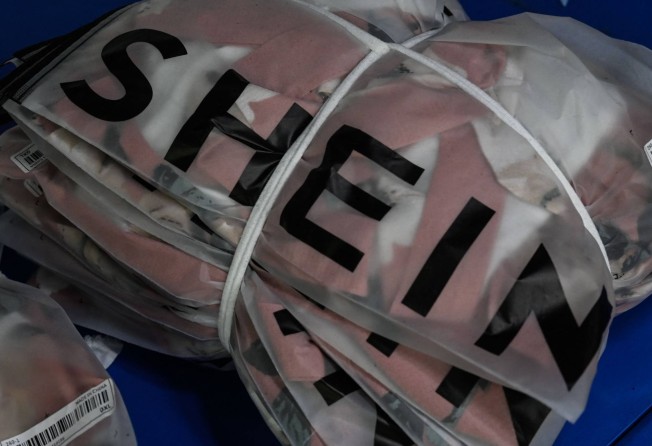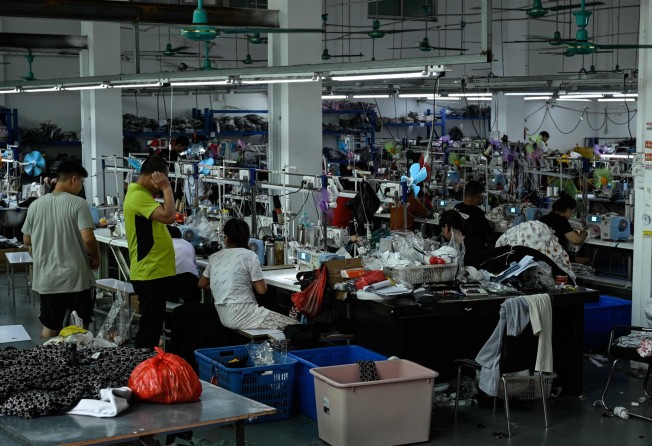
The toxic chemicals in our clothes – lead, chromium, PFAS, phthalates – and the harm they do us, our children and the workers who make them
- Fast fashion firm Shein has been accused of using chemicals in clothes that are linked to health problems in their wearers. Lululemon and Old Navy do the same
- Lead, chromium, phthalates, PFAS and brominated flame retardants are widely used by clothing manufacturers. Here’s what they do to your body and immune system

Chinese fast-fashion company Shein has responded to claims that its clothing contains toxic chemicals, insisting it is committed to “product safety”.
“We regularly test products and take action when non-compliance is found, including terminating suppliers,” the fast fashion brand said in response to a tweet.
A 2021 investigation into Shein by Canadian Broadcasting Corporation found elevated levels of lead, phthalates, and polyfluoroalkyl substances (PFAS) – chemicals linked to health problems – in clothing for children and adults, including pregnant women.
Experts said Shein is not a unique case. Clothes from many large clothing brands like Lululemon, Old Navy, and REI have been found to contain toxic chemicals.

While these chemicals are used at low levels, exposure to toxic substances over time can elevate a person’s risk of serious health conditions, such as asthma and kidney damage.
“It’s not just that people are exposed to one on a regular day,” Alexandra McNair Quinn, a chemical sustainability consultant and founder of Fashion FWD, a non-profit educating consumers about toxic chemicals in clothes, said. “It’s the accumulation of all of these exposures in a regular day that can be harmful.”
Why chemicals are so pervasive in fashion
The use of chemicals like PFAS and lead is “fairly common” within the fashion industry, according to Marty Mulvihill, a general partner with Safer Made, a venture capital fund that invests in firms reducing exposure to harmful chemicals.
Yoga pants and gym leggings sold by Lululemon and Old Navy contained PFAS, according to testing done by consumer health activist blog Mamavation. Outdoor apparel brands Columbia, REI, and L.L. Bean received either a D or F grade for PFAS by Fashion FWD.
A 2012 sample of clothes from popular retailers detected phthalates in 31 garments, and lead was found in baby bibs sold in Walmart and Babies R Us.
Quinn said manufacturers add these chemicals to make them waterproof or stain-resistant, and to soften ink on screen prints. Lead is sometimes found in low-cost pigments and inks, as well as zips, and chromium can make leather more pliable.

Exposure to toxic chemicals builds up over time
Workers in clothing factories can suffer from skin and respiratory illnesses after exposure to toxic chemicals.
Exposure to lead and phthalates may directly harm people manufacturing clothes, said Scott Echols, a senior director at the ZDHC Foundation, which works with companies to limit their chemical footprint.
The sustainable-fashion analytics firm Common Objective estimates 27 million people working in fashion supply chains worldwide might suffer from work-related illnesses or diseases, including skin and respiratory conditions.

As for the people buying and wearing the clothes, children – who put clothes in their mouths – might face increased risk from the toxic chemicals. The chemicals can also get into the body through the skin.
Furthermore, the exposure to toxic chemicals builds up over time, Quinn said. Not only are these chemicals in clothing, they exist in our food, water, make-up and personal care products.
“PFAS don’t just go away, they’re around for a very, very long time and they’re very harmful to the environment and human health,” Quinn said. “The government needs to develop a preventive approach where products don’t go on the market until they’re proven safe.”
Chemicals in clothes
Toxic chemicals used to make clothes include:
-
Chromium Used in leather products that can weaken the immune system and lead to liver and kidney damage.
-
Phthalates Used to soften ink on screen prints. They have been linked to early deaths in American adults, especially due to heart disease, and can disrupt the body’s hormones.
-
Brominated flame retardants Sometimes found in children’s pyjamas to protect them from fire. These chemicals, which are banned in Europe, can change thyroid functions and alter the way the body processes fats and carbs. Researchers are studying whether a link exists between flame retardant exposure and ADHD.
-
PFAS Also known as “forever chemicals”, are a group of lab-grown chemicals that don’t break down in the environment and are linked to a host of health conditions like liver damage, asthma, and chronic kidney disease. The substance is water- resistant and can be found in waterproof or stain-resistant gear.
-
Lead A low-cost pigment sometimes used as a cheap metal for zips. Significant childhood lead exposure can lead to long-term developmental problems.